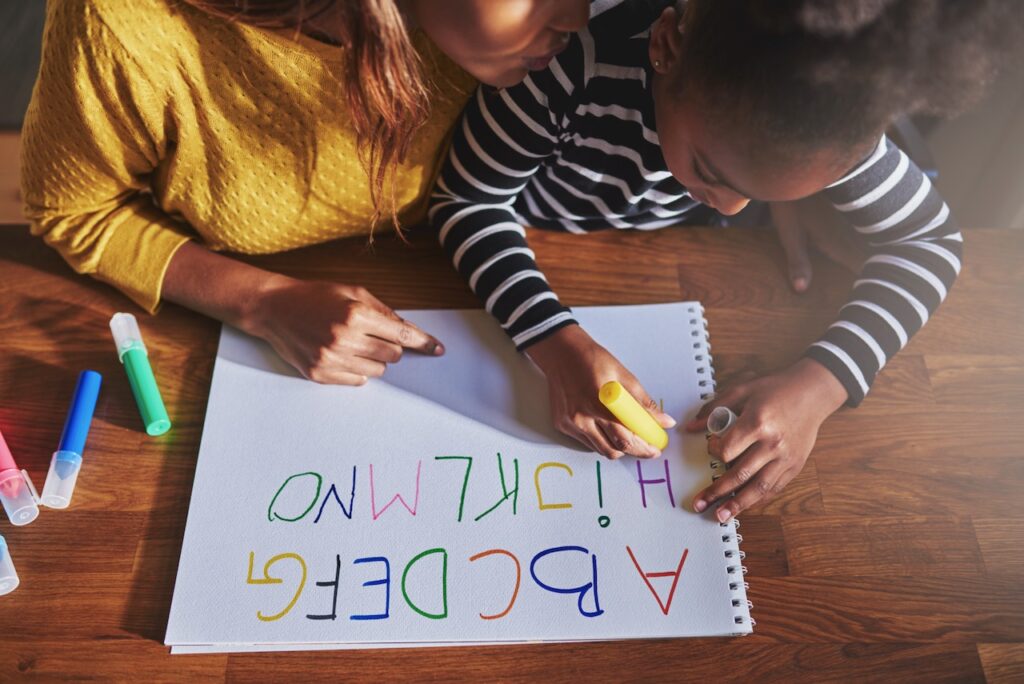
In learning psychology, a distinction is made between different learning types. The best-known model was developed in the 1970s by Professor Frederic Vester, who worked at the Bundeswehr University in Munich. The systems researcher described four learning types, which he categorized as visual, auditory, haptic (motor) and communicative (intellectual) learning types.
The way in which a person learns depends on personality, individual strengths and weaknesses ab. The findings of learning theory can help improve learning behavior. In our test "Which learning type am I?", you can find out how your child learns best and what you can do to make learning easier and improve the learning process. Achieving goals!
Every person has his or her own way of learning. We use our senses specifically to acquire knowledge and memorize content. However, there are different ways of learning. You probably know situations in which learning was particularly easy for you. On the other hand, there are also learning difficulties in children that are related to a lack of Motivation simply cannot be explained.
Whether a child learns well or badly at school, quickly or slowly, has little to do with intelligence, but is mainly due to the different way of learning - namely the learning type.
All sensory organs are involved in the learning process. The learning material does not only reach the brain through the eyes and ears. Memory of our child, but also about our senses of taste, smell and muscle. Have you ever discussed with your son or daughter how they actually learn best?
Assignment to one of the four learning types depends on how strongly the individual sensory organs are developed. The visual learning type learns mainly by looking at pictures, while the communicative learning type prefers to expand its knowledge by talking to other people.
If you know your own category, you learn faster and better. A learning technique only helps you to learn if it suits your personal learning type. The scientist Frederic Vester discovered that each person's ability to absorb, combine and store learning material depends on the preferred channels of perception.
This results in the classification:
It is assumed that most people can be described as mixed types with regard to their learning style. Nevertheless, an assignment to a specific type or types can be helpful.
The visual learning type learns best with image-based material. Vividness is very important for people who are assigned to this learning type. They memorize information more quickly when texts are supplemented by visual representations. This learning type is particularly good at remembering content that is presented visually.
At auditory learning type their hearing ability is above average. Listening helps them to absorb content better. Auditory learning types benefit most from frontal instruction. Since they acquire knowledge through voice recordings, audiobooks, podcasts and learning videos are well suited for people with this learning type.
The strength haptic learning types consists in their manual skills. Individuals with this learning type like to try out new things and want to touch everything in order to acquire knowledge. The haptic learning style relies mainly on the sense of touch and less on listening or looking.
As cognitive-intellectual learning types are people who think through information thoroughly and evaluate it critically before what they have learned is stored in the brain. The intellectual learner has distinct abilities to acquire knowledge content through understanding.

Which learning type am I and which learning type is my child? If you want to know which learning style determines your learning behavior and how you can optimize your learning strategy, then take our learning type test!
This consists of several questions. Answer them as precisely as possible. This will tell you what type you actually are. In the next chapter, you will get tips and suggestions on how to learn according to your categorization and how to use your learning skills in a targeted manner.
Learning already begins at birth. Toddlers discover their world in a playful way, using their hands to touch everything and "grasp" connections. Later, in school, college or training, it's all about the targeted acquisition of knowledge. This involves learning actively and remembering the content in the long term.
Success in learning also depends on how one learns. Every person brings the ability to learn into life. However, learning is an individual process that depends on one's own learning type.
If you know what type of learner you are, you'll be able to Learning methods to your needs. To make learning easier for you, we have collected the following tips and tricks.
The sense of hearing plays a central role in auditory learning. Ensure a quiet environment without annoying noise sources so that you can concentrate undisturbed on the learning content. Talking to yourself can help you to retain the learning material better.
Read a text aloud to yourself. As an auditory learner, you can learn vocabulary and formulas more easily by saying them out loud. You can also record the material and play it back later when you go for a walk.
Is your child a visual learner? Then you should make your learning content as clear as possible. Take notes during oral presentations. This way, you can see the learning material again later and read what you have written at home. Sketches and mind maps help to illustrate content for visual learning comprehension.
To keep track of what you're learning, it's helpful to hang visual learning aids such as diagrams, notes, and concepts in a place where they're easy to see, such as on the refrigerator or on your bedroom door. A popular trick for visual learners is to rephrase what you're learning by writing it down.
This method, which consists of reproducing what has been said in one's own words, is particularly well suited to visualizing content and thus retaining it in memory for longer. A efficient One way to structure texts and categorize information is to color-code important places in the text with a highlighter.
Motor learning types are manually oriented in everything they do. Content is best understood when it is made tangible. Do you have difficulty remembering knowledge through reading and listening? Use your manual skills, which are above average in the motor learning type, to make learning more dynamic.
Learning vocabulary will be easier for you if you associate the respective terms with objects that you can touch or hold in your hand. For motor learners, it is recommended not to study at a desk, but to move and walk around the room while studying.
Texts to be learned can be recited aloud and underlined with facial expressions and gestures. Self-made learning aids such as index cards and study notes are suitable as practical support when doing homework.
The intellectual learning type learns by reflecting and thinking. Critical examination of learning content in the form of discussions with teachers and fellow students is very important for people of this learning type. The intellectual learning type learns more in conversation than by studying alone at a desk.
Talk to your teachers, classmates, fellow students or colleagues when you need to understand incomprehensible facts. Discuss the subject matter with others and look at it from different perspectives. Learning in groups is particularly suitable for the intellectual learner type, as this allows the subject matter to be analyzed.
As a trainer or coach, you have a significant influence on the transfer of knowledge and content. The Ordinance on Trainer Aptitude (AEVO) regulates which knowledge must be proven in order to work as a trainer. The learning types of Aevo are also of great importance.
Good observation and regular conversations with your students will help you identify which learning types your trainees match. If you want to support your apprentices, course participants or coachees in their learning, a learning type test can be considered.
Regardless of which category one feels one belongs to and preferred learning method, it is important to involve as many senses as possible in the learning process. The possibilities of learning, remembering and retaining learning content are manifold. In addition, the recall rate increases significantly when all of our senses are involved in the learning process. Learning process are involved.
Almost no one can be assigned to just one learning type. Since people are sensual beings, they also use all their senses for learning. Therefore, it would be inappropriate to concentrate only on the focal points that correspond to one's own learning type when learning.
Defining these personalities is only one of several perspectives that can facilitate learning. Other factors that play a significant role in the acquisition of knowledge are motivation, interest in the subject, and the learner's personality.

Everyone learns differently. This realization forms the basis on which different learning types have been defined. Four different types have been described by scientists such as Frederic Vester and differentiated according to the way they prefer to absorb knowledge.
The idea behind classifying people into different learning types is that knowledge is best acquired when information is processed according to the sensory channels used in learning.
Do you want to learn with less effort yourself or help your child learn? Then simply download our free e-book: The 10 best tips for fun and success in learning down. Our tried-and-tested tips will help you support your child in learning in the best possible way, so that joy and passion are once again at the forefront.

